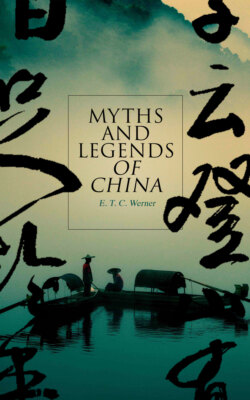Читать книгу Myths and Legends of China - E. T. C. Werner - Страница 67
На сайте Литреса книга снята с продажи.
Monism
ОглавлениеAs their imagination grew, it was natural that the Chinese should begin to ask themselves what, if the yang and the yin by their permutations produced, or gave shape to, all things, was it that produced the yang and the yin. When we see traces of this inquisitive tendency we find ourselves on the borderland of dualism where the transition is taking place into the realm of monism. But though there may have been a tendency toward monism in early times, it was only in the Sung dynasty that the philosophers definitely placed behind the yang and the yin a First Cause—the Grand Origin, Grand Extreme, Grand Terminus, or Ultimate Ground of Existence. 9 They gave to it the name t'ai chi, and represented it by a concrete sign, the symbol of a circle. The complete scheme shows the evolution of the Sixty-four Diagrams (kua) from the t'ai chi through the yang and the yin, the Four, Eight, Sixteen, and Thirty-two Diagrams successively. This conception was the work of the Sung philosopher Chou Tun-i (A.D. 1017–73), commonly known as Chou Tzu, and his disciple Chu Hsi (A.D. 1130–1200), known as Chu Tzu or Chu Fu Tzu, the famous historian and Confucian commentator—two of the greatest names in Chinese philosophy. It was at this time that the tide of constructive imagination in China, tinged though it always was with classical Confucianism, rose to its greatest height. There is the philosopher's seeking for causes. Yet in this matter of the First Cause we detect, in the full flood of Confucianism, the potent influence of Taoist and Buddhist speculations. It has even been said that the Sung philosophy, which grew, not from the I ching itself, but from the appendixes to it, is more Taoistic than Confucian. As it was with the P'an Ku legend, so was it with this more philosophical cosmogony. The more fertile Taoist and Buddhist imaginations led to the preservation of what the Confucianists, distrusting the marvellous, would have allowed to die a natural death. It was, after all, the mystical foreign elements which gave point to—we may rightly say rounded off—the early dualism by converting it into monism, carrying philosophical speculation from the Knowable to the Unknowable, and furnishing the Chinese with their first scientific theory of the origin, not of the changes going on in the universe (on which they had already formed their opinions), but of the universe itself.
